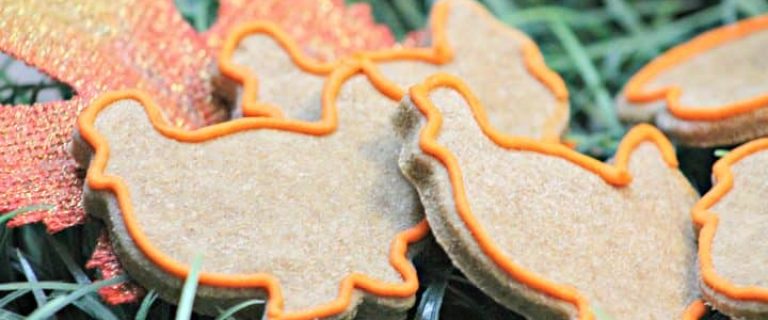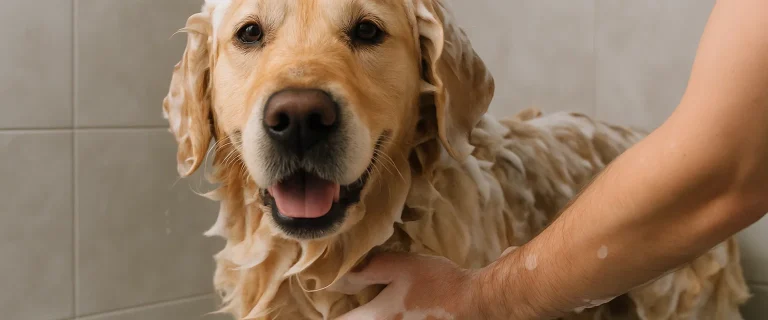Dog saliva is a prime allergen offender for those who have dog allergies, but many people don’t know this. Some people still believe that fur is what causes their pet allergies, so they adopt a non-shedding breed. BUT then they let that breed lick their faces and hands. While it makes you feel a strong bond with your pooch, as you can imagine, licking gets saliva ALL over you, and that’s bad if you’re allergic.
Related: What Makes a Dog Hypoallergenic?
Dog Saliva is Allergen Central
I once had a message board conversation with an owner who had gotten a Maltese, because she had severe dog allergies and asthma, but she still wanted a pooch in the worst way. The Maltese is one of the least offending dogs on the planet for people with allergies, so she couldn’t figure out why she was still having so much trouble. After all, there was no hair to speak of in her house.
To make a long story short, her dog loved her. He loved her “lap dog style” and frequently licked any exposed area of skin on her from her feet to her face. He also had the unfortunate tendency to want to “clean” her nose.
It’s not the hair we allergy sufferers are allergic to, it’s the saliva, dead skin, and urine. So basically, she had gotten a shed-free dog and then allowed him to deposit his highly allergenic saliva onto her skin, and worse on her mucous membrane.
She had no idea. I heard back from her a few weeks after she’d said she was going to nip the licking in the bud, and she was doing perfectly wonderful. So there’s a real world example of just how detrimental dog saliva can be to people who are allergic to dogs.
Why is Dog Saliva so Allergenic
Dog saliva, along with dander and urine, contains specific proteins that can trigger allergic reactions in sensitive individuals. These proteins, known as allergens, are the true culprits behind allergic responses. When a dog licks itself, these proteins are transferred from the skin and fur into the saliva, creating a potent mix of allergens.
What makes dog saliva particularly problematic is not just its inherent allergenic properties but also how easily it can spread. Unlike dander and urine, which require some level of contact or proximity to transfer, saliva is much more direct. Dogs often show affection by licking their owners, meaning the allergenic proteins are deposited right onto the skin, where they can quickly be absorbed or inhaled.
Moreover, when dogs lick themselves, the saliva gets spread all over their fur. As they move around, dried saliva can flake off and become airborne, contributing to the overall allergen load in the home. This makes it challenging for individuals with dog allergies to avoid exposure, even if they aren’t directly licked by the dog.
To illustrate the impact, consider this: while dander may settle on surfaces and urine might be contained to specific areas, saliva can be everywhere your dog is. From their favorite spots on the furniture to your clothing, and even your bed, the allergens in dog saliva are pervasive. This omnipresence makes it the primary allergen to avoid for those with sensitivities.
In essence, the love and affection from a dog, often shown through licking, can ironically be a source of discomfort for allergy sufferers. It’s one of those instances where a dog’s natural behavior can lead to unintended allergic reactions, turning a gesture of love into a trigger for sneezing, itching, and other allergic symptoms.
Understanding the role of dog saliva in allergies is crucial for managing symptoms and finding effective ways to minimize exposure. Whether it means implementing more rigorous cleaning routines or seeking medical advice, being aware of the allergenic potential of dog saliva can help allergy sufferers enjoy the company of their furry friends with fewer health complications.
Signs You May Be Allergic to Your Dog’s Saliva
If you’re experiencing unusual symptoms after spending time with your dog, you might be allergic to their saliva. Here are some common signs to watch for:
- Skin Reactions: Redness, itching, or hives at the site where your dog licks you.
- Respiratory Issues: Sneezing, coughing, or a runny nose after contact with your dog.
- Eye Irritation: Itchy, watery, or red eyes, especially if you’ve touched your face after being licked.
- Asthma Symptoms: Wheezing, shortness of breath, or chest tightness, which may worsen after exposure to your dog’s saliva.
- Facial Swelling: Puffiness or swelling around the eyes and face.
- Eczema Flare-Ups: If you have eczema, contact with dog saliva might cause your condition to worsen.
- Gastrointestinal Problems: Although less common, some people may experience nausea or stomach cramps after ingesting allergens accidentally (e.g., touching food after petting their dog).
If you notice any of these symptoms consistently after interacting with your dog, it’s important to consult with a healthcare professional to determine if a saliva allergy is the cause and to discuss appropriate management strategies.
Ways to Minimize Allergy Symptoms When You’re Allergic to Your Dog’s Saliva
Living with a dog when you’re allergic to their saliva can be challenging, but there are several strategies you can adopt to minimize your symptoms. Here are some effective tips to help you manage your allergy and enjoy your time with your furry friend:
Minimize Contact with Saliva
- Limit Licking: Train your dog to reduce licking behaviors. Reward them for showing affection in other ways, like sitting calmly next to you.
- Wipe Down Your Dog: Use hypoallergenic pet wipes to clean your dog’s fur and skin regularly, removing dried saliva and other allergens.
- Wash Hands Frequently: Always wash your hands after petting your dog or handling their toys and bedding.
Keep Your Home Clean
- Regular Bathing: Bathe your dog regularly using a gentle, hypoallergenic shampoo to reduce the amount of saliva and dander on their fur.
- Frequent Cleaning: Vacuum your home with a HEPA filter vacuum cleaner to remove allergens from floors and furniture. Mop hard floors regularly.
- Wash Bedding: Clean your dog’s bedding and your own frequently to eliminate saliva residues.
Create Allergy-Free Zones
- Pet-Free Zones: Establish certain areas of your home, such as bedrooms or home offices, as pet-free zones to reduce exposure to allergens.
- Air Purifiers: Use HEPA air purifiers in key areas of your home to filter out airborne allergens.
Personal Hygiene
- Change Clothes: After playing with or grooming your dog, change your clothes to avoid carrying allergens around the house.
- Shower Daily: Shower before bed to remove any allergens from your skin and hair, reducing nighttime exposure.
Medical Interventions
- Allergy Medications: Consult with your doctor about using antihistamines or other allergy medications to manage symptoms.
- Allergy Shots: Consider immunotherapy (allergy shots) if your allergies are severe. This can help build tolerance to allergens over time.
General Tips for Minimizing Dog Allergies
- Diet and Supplements: Feed your dog a high-quality diet and consider supplements that promote skin health to reduce shedding and dander.
- Regular Grooming: Brush your dog frequently to remove loose fur and dander. This is best done outside to keep allergens out of the house.
- Ventilation: Ensure your home is well-ventilated to prevent allergens from accumulating in the air.
By combining these strategies, you can significantly reduce your exposure to dog saliva and other allergens, making it easier to manage your symptoms and enjoy the companionship of your dog.
Dog Saliva – STAY AWAY
Dog saliva is one of the worst things for a person with dog allergies. It contains all the proteins that allergy sufferers need to avoid, and it’s all over the place. Even if your dog doesn’t drool, it’s going to be licking you, or at least trying. Remember, even if you get a hypoallergenic dog, you still need to be aware that although he may not shed, you still need to be wary of dog saliva.
Do you have any other questions about dog saliva and it’s relationship to allergies? Let us know in the comments!
Author
-

A former Veterinary Assistant at Southwest Animal Care Hospital, Ben is an animal lover, blogger, and all-around geek. Along with writing for DogVills, Ben runs his own virtual assistant company, BizzyBim.
View all posts



